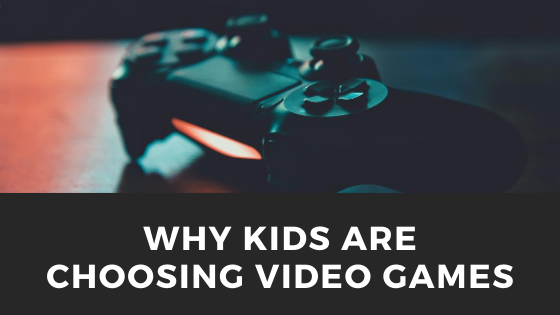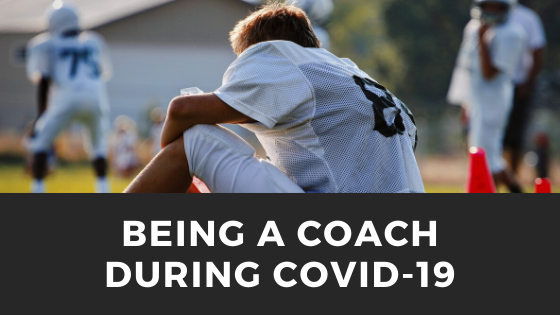There are clear distinctions between generations and their tendencies. It has become extremely apparent that younger individuals have grown up in a unique environment. Generation Z (Gen Z) individuals are youth born after 1996 and the first to grow up in an entirely digital world.
The oldest individuals of Gen Z are now 22 years old. This is the average for completing college and entering the work force. However, the younger is predominantly still in grade school or entering college. It is extremely valuable to understand the characteristics of this generation in order to lead them effectively.
The following strengths, challenges, and strategies, are based on my experience as a coach with youth athletes as well as the research of coaches’ and teachers’ perceptions of working with Gen Z youth.
Keep in mind, that these ideas are generalized to represent an entire generation. In no way do the following points describe every individual. The strengths, challenges, and strategies may address the stereotypes of Gen Z. It is key to understand the individuals you are working with before implementing the following.
My Experience
As a youth coach, I rarely work alone. I work with other coaches and parents to help provide the best training to athletes. I often hear complaints of the younger generation. Many people are quick to mention the difference in priorities, shorter attention spans, sense of entitlement, lack of motivation, and the fact that they always seem to have their phones in their hands.
However, when I challenge other adults to find the strengths of the younger generation, they aren’t as quick with their response. The most common response is that kids have a knack for understanding and using technology. But rarely are their other personal qualities or abilities at the surface of their minds. The fact is: Gen Z has many strengths.
The Strengths of Gen Z
In the book, Generation Z Goes to College, the younger generation is described as a group that is responsible, compassionate, realistic, open-minded, and accepting of diversity. Being able to identify, label, and communicate strengths is a tremendously valuable skill of any leader. It may feel easier to notice and highlight weaknesses of your group. However, in order to keep your team committed and motivated, strengths must become part of the conversation.
Take the time to list out the strengths of Gen Z youth in your life. Speaking to a groups strength is a skill of great leaders and it requires intentional development.

Secondly, Gen Z youth is characterized as being the best educated generation in history. This can largely be attributed to the fact that technology has been readily available to them their entire lives. They have access to an abundance of information online and have the skills to access it easily.
Gen Z individuals have a tendency to be visual learners. Coaches have found that incorporating technology as a learning aid improved youth athletes’ ability to understand and comprehend new skills.
Lastly, Gen Z tends to be curious and open to learning when they understood the “why” of their current project. In coaching, many such athletes will commit to their training program if they understand why and how it benefits their performance.
When I highlight my athletes’ strengths they get energized. They develop a greater connection to our team’s goals and understand how to contribute to those goals. Leveraging strengths to not only improves performance but increases satisfaction and commitment to your group.
The Challenges of Gen Z
Unfortunately, when a group has a major strength there tends to be downsides to leaning too heavily on that area. Due to the amount of time these individuals tend to spend on technology, they are thought to have shorter attention spans, need frequent feedback, and lack a sense of independence. Gen Z youth also tends to have a preoccupation with social media which can be distracting, disengaging, and a time-wasting habit.
A second challenge of leading Gen Z is the fact that their attention spans seem to be shorter than previous generations. This is a concern for leaders because not only can it be challenging to capture the attention of younger individuals, but they also tend to have difficulty focusing for more than a few minutes at a time.
Other challenges include coaches and teachers noticing a lack of independence and a sense of entitlement or ungratefulness. These athletes and students were described as less appreciative which can be a demotivating factor for leaders.
As a coach these challenges frustrate me. It’s especially difficult with a new set of athletes who I haven’t had the chance to work with and teach yet. But, the good news is with some time and patience I can help athletes improve in each area. I have researched, tested, and sorted out which strategies are the best for leading the younger generation. All of the strategies below are in my mental toolkit for coaching Gen Z athletes.
Leadership Strategies
Motivation
In order to develop long-term motivation in Gen Z youth, it is critical to help them focus on measurable improvement. Therefore, setting daily short-term goals will help them maintain motivation for their long-term goals. Leaders need to foster a work mindset by encouraging effort and persistence.
As a leader, tie the individual’s passion and drives to their current work. This way the individual has personal motivators. Take the time to explain the connection between the daily work and long-term goals. Gen Z tends to be more motivated if they understand the connection between the daily tasks and their dreams.
Communication
To communicate effectively, leaders have found that open-ended questions were critical to facilitate feedback and give the individual a voice in their development. Questions that allow for the individual to speak at length will help you understand where their focus is and use similar language when responding.
Texting tends to be the preferred method of communication by Gen Z youth. Leaders have found that the best use for texting is for logistical communication. However, it is recommended that conversations on more important topics are held face-to-face. Doing so will give your group more experience using real-life communication skills.
Attention Span
Due to the perceived short attention span, leaders need to be direct and to the point with instructions and objectives. Be intentional about keeping the group engaged and focused. This can be done by setting up an environment with a singular focus and having expectations for the individuals’ focus. Minimize the possible distractions when you hold group meetings. Whenever possible, avoid places with multiple televisions or a lot of movement and noise.
A secondary strategy is to look at improving quality over quantity. In the case of Gen Z athletes, designing practice with efficient and challenging movements compared to short and repetitive movements were more effective in retaining the athletes’ attention.
I have improved the attention span of my youth athletes through the gradual increase of potential distractions. With my youngest athletes we tend to practice in a space where there are not a lot of other teams or people around. This way I am able to capture and keep their attention. We eventually start practicing with more distractions in a busier setting. However, it is crucial to teach the group how to appropriately shift attention. I do this by asking them to give me five seconds of attention then they can look and focus on what’s going on around them, then I repeat this with a longer duration of holding their attention.
The goal is to develop the skill of attention shifting and increase attention span.
The athletes learn that they have the ability to focus and then train this skill to maintain it for longer periods of time. They also learn that I let them to free their attention to other areas fairly frequently. Therefore, they can commit to hearing out my instructions, move their attention elsewhere and then bring it back for the actual drill.
Expectations
Setting clear expectations is critical to leading Gen Z youth. As a leader, it is your role to define and set the expectations for how your group will handle itself on a daily basis. It is your responsibility to make sure that the group understands exactly what those expectations are. Once those expectations are outlined, your group needs to have the opportunity to provide input and agree upon them. Doing so allows for your group to be completely bought in.
In setting expectations, consider implementing a specific point about phone and social media usage. I have worked with coaches who do not allow phones into the locker room. It prevents all pre-practice and pre-game distraction. At first the athletes were upset but after a few weeks in they enjoyed that there was much more interaction in the locker room.
Being the leader, it is key that I model these expectations myself. I cannot expect my group to take my expectation about phone usage seriously if I do not do so myself. If the expectation is that the athlete’s do not use their phone while in a conversation, that applies to me as well.
Independence
As a leader, it is key that you provide structure, however Gen Z individuals need to have some autonomy within that structure. To develop autonomy, give your group the opportunity to make choices and determine responsibilities while holding them accountable. In addition to increased autonomy, it is important that the group has some ownership and voice in the group’s direction. Provide opportunities for your team to decide on the next short-term project or allow them to determine the repercussions for not meeting a set expectation.
I have coaching plans set out for each team I work with, however, I will let the athletes choose between two different drills. I plan to get to both of them during practice but the group can decide which one they get to do first.
With my youngest athletes, it’s as simple as asking them for a freeze word for the day. That way during practice when athletes inevitably stop following the plan, I can use their chosen freeze word to get everyone back on task.
Resilience
Depending on the setting, resilience may be a difficult strategy to implement. Talking and teaching Gen Z youth how to properly cope with stress will lead to a greater sense of confidence.

In coaching Gen Z athletes, I create stressful and challenging situations in practice. Before doing so, it is key to teach athletes the coping skills to manage the adversity. The skills I teach my athletes include, keeping their thoughts in the present moment, taking deep and measured breaths, and using a positive self-talk phrase. We practicing resilience skills in a safe environment like the locker room. Then try it in practice, which improves their ability to manage challenging game time.
Individualizing Development
Build a strong relationship with your group. When you have a strong relationship with those you lead, you will be able to understand how each individual processes and responds to information. Some individuals may require more encouragement than others. There will be individuals who work better with detailed instruction. There will be others who will benefit from working it out on their own.
How you instruct your group it’s important to consider their strengths. Many people in previous generations can understand and apply auditory instructions by you simply telling them what you expect. However, reports suggest that Gen Z individuals benefit significantly from visual instructions. This looks like writing out expectations or showing them what you’re looking for.
The younger generation will be much more likely to follow you as a leader if they believe you are customizing their individual development.
In the past, I have verbally stated what I am looking for from my athletes and they seem to glaze over. The words seem to stop having meaning to them and they’re just staring at me. When I ask them to follow through with the instructions, I am bombarded with a hundred questions about what they are supposed to be doing.
Now, I always take the time to physically demonstrate the movements that I am looking from my athletes. They can see the proper form and the fluidity of a specific movement. I often take if further by breaking each complex task into smaller chucks where a specific athlete can practice and implement all at once later.
For Consideration
The challenges, strengths, and strategies discussed above are based on generalized results from research on the teaching and coaching of individuals born after 1996. Although the research highlights and addresses generational stereotypes, it is important to consider the specific individuals that you are working with when implementing leading strategies.




